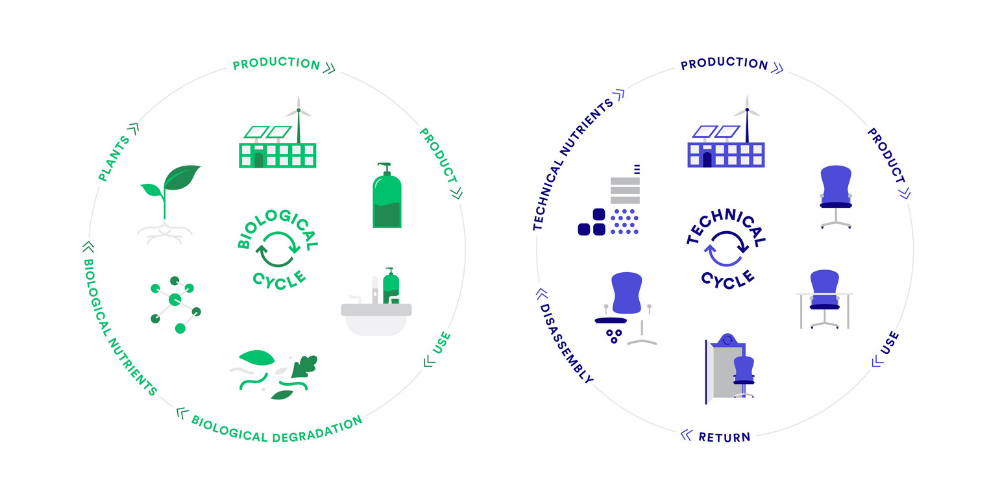
Chemistry lies at the heart of everything we do, from the products we use to live, work and play, to food, clothing, medicine or the innovation of new materials. As governments, industries, and companies around the world use the UN Sustainable Development Goals to take action on increasingly urgent environmental and human health concerns, the chemical sector has a mission-critical role to play.
Over the past year, the COVID-19 pandemic has brought the urgency of these concerns into even sharper focus by highlighting the complex interrelationship between human health and wellbeing, our environment, and our economy. To make a healthy, equitable, sustainable world a reality, we need to invoke responsible consumption and production practices today – and they begin with safer chemistry. Safe, sustainable chemicals are the key to unlocking a full transition to a regenerative “circular” economy that maximizes the well-being of humans and our planet.
Standards like the Cradle to Cradle Certified® Product Standard offer a practical solution for putting the circular economy into practice. Developed and administered by the Cradle to Cradle Products Innovation Institute, Cradle to Cradle Certified is a comprehensive framework for addressing the critical sustainability objectives that define products made to have a positive impact on people and the planet today, and tomorrow.
The majority of human and environmental impacts of a product are determined during the product design and development stage, but simply designing products to “live” within a circular system of use and reuse (upcycling, recycling etc.) is not enough: Transforming the concept of a regenerative “circular” economy into reality ultimately depends upon making sure that we are circulating the right materials to begin with.
A science-based standard developed through a global multi-stakeholder process, the Cradle to Cradle Certified Product Standard is based on the latest research, scientific methodologies, technical developments and leading industry practices. Certification is predicated upon a product’s achievement in five critical performance categories: Material Health, Product Circularity, Clean Air & Climate Protection, Water & Soil Stewardship, and Social Fairness.

The Cradle to Cradle Certified Product Standard enables chemical companies to:
Prioritize action across five sustainability focus areas:
- Material Health: ensuring materials are safe for humans and the environment
- Product Circularity: enabling a circular economy through regenerative products and process design
- Clean Air & Climate Protection: protecting clean air, promoting renewable energy, and reducing harmful emissions
- Water & Soil Stewardship: safeguarding clean water and healthy soils
- Social Fairness: respecting human rights and contributing to a fair and equitable society
Enact roadmaps for change, from product innovation to operations.
Transform business models, systems and collaboration throughout the value chain.
Verify sustainability performance and measure progress.
Lead industry transformation towards a safe, circular and equitable future.
To earn certification, companies work with an independent third-party assessor to determine a product’s performance across the five categories at Bronze, Silver, Gold, or Platinum level. The lowest level of category achievement determines the product’s overall certification level, and alongside required recertification every two years creates a continuous improvement roadmap for future environmental and social performance.
Chemistry is key to the Cradle to Cradle certification: determining a product’s performance in the Material Health category is the first step in the certification process. Rooted in the thinking that everything is a resource for something else, the Material Health assessment and methodology process is rigorous, science-based, and designed to ensure the chemicals and materials used in a product prioritize the protection of human health and the environment, generating positive impact on the quality of materials available for future use and cycling. The process of assessing and optimizing a product’s material health also gives chemical companies a platform for partnering with suppliers and customers on the innovation of new technologies and materials.

The standard approaches Material Health as a four-step pathway: first, it considers what is in the finished product by making an inventory of all ingredients. Next, those ingredients are screened against the Institute’s Restricted Substances List (RSL). Based upon leading chemical regulations such as REACH, the RSL serves as a first line of defense in identifying and eliminating chemicals of concern. This rigor ensures the users of Cradle to Cradle Certified products have the utmost confidence that those products meet the strictest international requirements.
More importantly, beyond list-based restrictions alone, the standard also requires program participants at every level (from Bronze to Platinum) to undergo full toxicological assessment of the chemicals/ingredients present in their products. This stage includes a comprehensive evaluation of chemical hazard profiles and their risks in a specific product context. The assessment is a critical step on the journey to safer products, facilitating the phase-out of chemicals of concern while ensuring regrettable substitutions are avoided. Once it is complete, the last step is to optimize the product’s chemistry to pose no risk, either by redesigning, reformulating or innovating new materials and/or processes.

This rigorous and comprehensive approach to material health as a fundamental requirement in achieving Cradle to Cradle certification does more than enabling sustainable product development and design: it powers the generation of innovative materials and products that are safe as well as circular.
By giving companies working to address SDGs and ESG a scalable methodology that is practical to implement, the Cradle to Cradle Certified Product Standard serves as a real-time measure of progress and a roadmap for continuous improvement and innovation. Each ascending level of environmental and social performance also serves as independent verification of achievement – a valuable tool for transparent communication, market recognition, and consumer acceptance.
It also creates a platform for increased partnership, engagement and collaboration between the chemical sector and the industries it supplies, setting the stage for better decisions around product formulation and design, future-proofing R&D and innovation pipelines.
In other words, it underscores the power of the chemical sector to enable a circular economy by serving as a partner, solutions-provider and innovation driver for all other sectors of industry through the responsible production, use and management of chemicals and through its own innovation of products and practices designed today for a healthy, equitable and sustainable tomorrow.
This article has been edited for length and clarity. The opinions expressed in this article are the author's own and do not necessarily reflect the view of their employer or the American Chemical Society.
Copyright 2022 American Chemical Society (All Rights Reserved)









